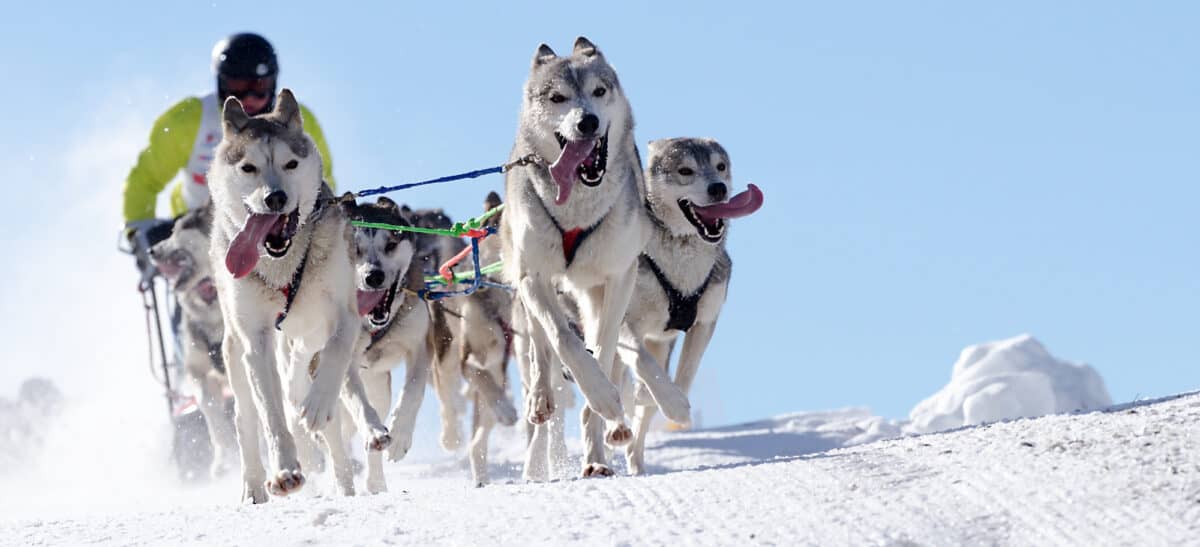Climate change is an ever-present issue with widespread effects across the globe. While its impact on humans is widely discussed, its effects on animal populations, including our beloved canine companions, are also profound. This article explores how climate change is reshaping the environment for dogs worldwide, impacting their health, behavior, and living conditions.
Shifting Habitats and Urbanization

As climatic conditions shift, animals, including dogs, are forced to adapt to new habitats. Urbanization, driven by expanding human populations and changing rural environments due to climate change, leads to reduced natural spaces for dogs. As cities grow, homeless or feral dogs often populate urban settings, where food and shelter competition can be fierce, impacting their well-being and survival rates.
Extreme Weather Patterns

Increased frequency of extreme weather events such as hurricanes, floods, and wildfires presents direct threats to dog populations. These events often lead to displacement, loss of habitat, and separation from owners, putting both strays and pets at risk of injury, stress, and death. This upheaval presents logistical challenges for animal rescue operations and shelters struggling to accommodate the influx of displaced animals.
Heat Stress and Rising Temperatures

Rising global temperatures pose a significant threat to dogs, particularly those in already warm climates. Dogs are more susceptible to heat-related stress and illnesses, as they can only sweat through their paws and rely on panting to cool down. Prolonged exposure to high temperatures can lead to heatstroke, dehydration, and increased mortality rates, especially among brachycephalic breeds like Bulldogs and Pugs.
Changing Patterns of Parasitic Infections

Climate change has altered ecosystems in a way that makes them more hospitable to parasites like ticks and mosquitoes, which can carry diseases affecting dogs. With milder winters and earlier springs, the tick and mosquito seasons have expanded, increasing the incidence of diseases, such as Lyme disease and heartworm, thereby posing a higher risk to dog health.
Impact on Breeding Cycles

Climate change is also influencing breeding cycles and reproductive health in dogs. Changes in seasonal patterns can disrupt natural breeding times, leading to out-of-sync mating seasons and potentially impacting dog population dynamics. Altered reproductive cycles could result in fewer successful pregnancies, affecting population numbers over time.
Food Availability and Nutrition

Shifts in agricultural practices and crop yields due to climate change can influence the availability and cost of dog food ingredients. Scarcity of certain grains and proteins could lead to increased prices and changes in dog food formulations. Malnutrition becomes a risk for dogs whose owners may struggle to afford changing pet food prices, particularly in economically vulnerable regions.
Water Scarcity and Quality

Water shortages and declining water quality pose challenges for dog populations, especially in arid regions. Access to clean water is crucial for dogs’ health, and scarcity can lead to dehydration and related health issues. Contaminated water sources may also increase the risk of waterborne diseases, adding additional stress to health systems both for humans and animals.
Aggression and Behavior Changes

Environmental stressors resulting from climate change, such as heat and scarcity of resources, can impact dog behavior, including increased aggression and anxiety. Stressful environments may lead to changes in social structures among dogs and increased incidences of dog fights, affecting both feral populations and pets.
Species Interactions and Biodiversity Loss

Climate change-induced habitat alterations can lead to changes in species interactions, impacting canine populations. For example, as certain predator or prey species decline or change their range, dogs that interact with these animals may face different survival challenges and opportunities. Loss of biodiversity can disrupt food chains and ecosystems that support both domestic dogs and their wild relatives.
Increased Zoonotic Diseases

With climate change, the risk of zoonotic diseases—those that can be transmitted between animals and humans—may increase. Warmer climates can expand the range of pathogens, leading to a higher occurrence of diseases transmissible from dogs to humans, complicating public health measures and potentially increasing the strain on veterinary and healthcare services.
Threats to Indigenous Dog Breeds

Many indigenous dog breeds, specially adapted to their environments, face existential threats due to climate change. Breeds that live in harsh climates, such as sled dogs in Arctic regions, may struggle as their environment rapidly changes, reducing the demand for traditional uses and threatening their future survival.
Role of Dogs in Ecosystem Management

Dogs often play a vital role in ecosystem management, such as guarding livestock or acting as companions in conservation efforts. Climate change poses a risk to these roles by altering ecosystems. The shifting balance of nature due to climate change can challenge the effectiveness of working dogs in conservation and agricultural settings, inhibiting their ability to perform tasks that help manage environmental impacts.
In conclusion, climate change is making a significant impact on dog populations worldwide, affecting their health, behavior, and interaction with the environment. As we consider the broader impacts of climate change, it is crucial to recognize and address the challenges faced by our canine companions. Supporting initiatives to mitigate climate change and help dogs adapt to these environmental shifts is essential for their continued well-being and for preserving the bond between humans and their beloved animals.
- The Wild Mustangs of Nevada Are a Living Piece of American History - August 17, 2025
- The Most Unusual Places in America That Have Seen Snowfall - August 16, 2025
- The Most Devastating Tsunami to Ever Strike the US West Coast - August 16, 2025

